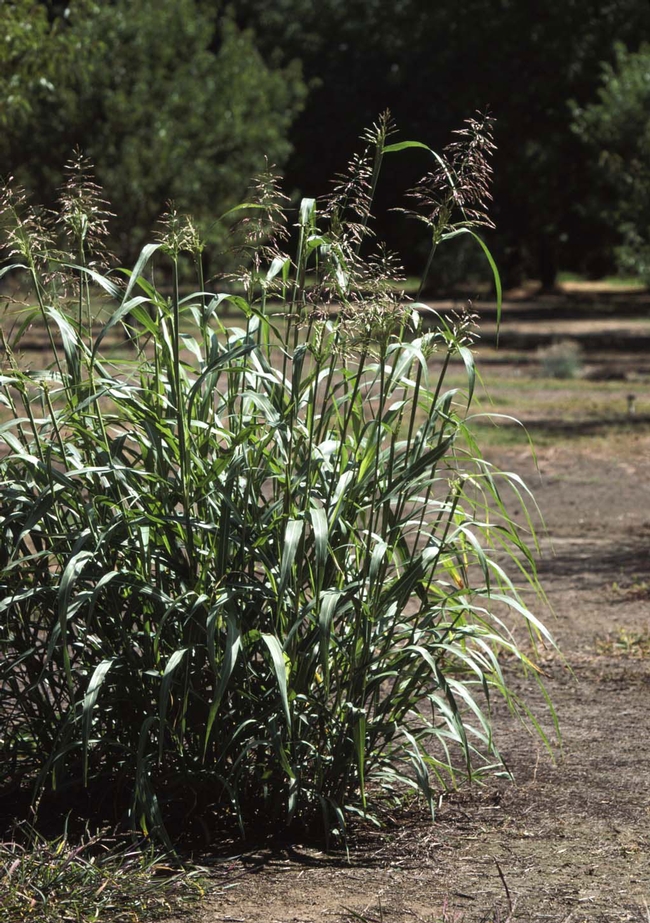Posts Tagged: Sorghum
Be on the lookout for sugarcane aphid this summer
Last year many forage sorghum fields were heavily infested and damaged by Sugarcane Aphid (SCA) (Figure 1) – Melanaphis sacchari –...
Flea beetles - A nuisance in early-planted, San Joaquin Valley small grains
PCA's and field scouts, be on the lookout with your hand lenses this late fall for flea beetles in recently emerged small grains that are planted...
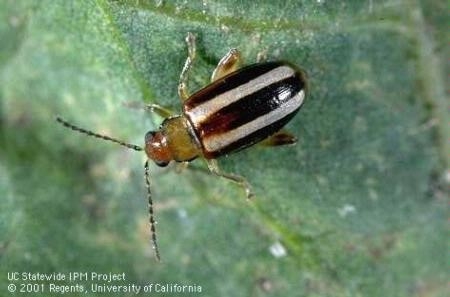
Adult Pale-striped Flea Beetle
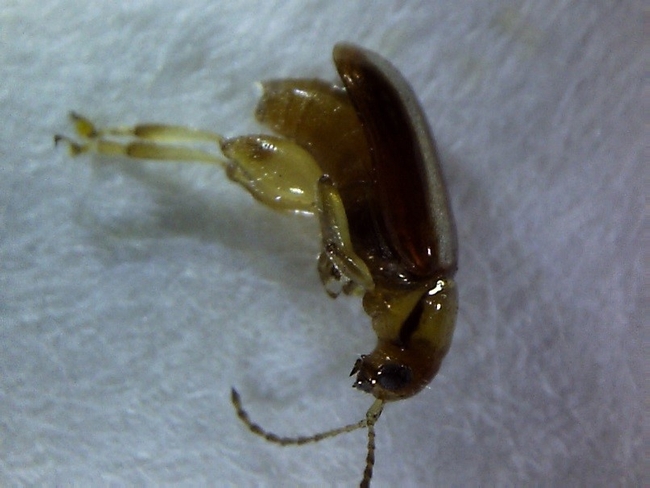
Flea beetle enlarged femur
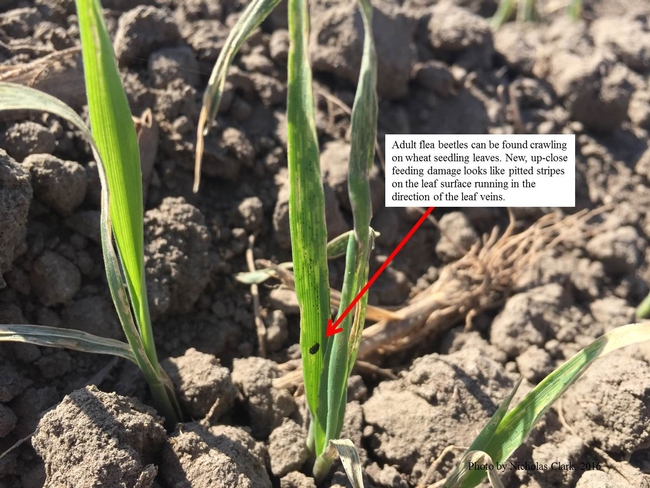
Flea beetle on wheat seedling
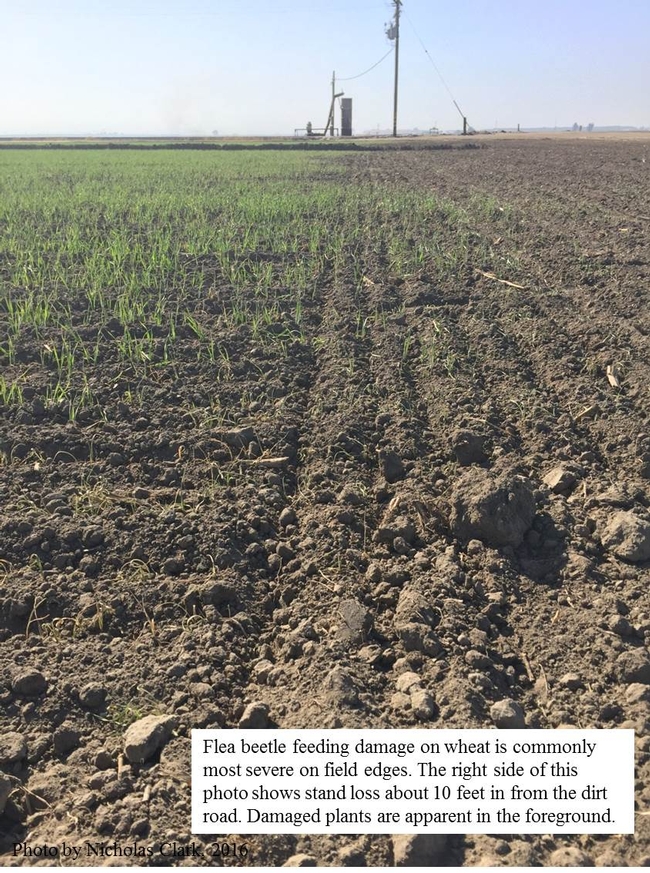
Flea beetle feeding damage to edge of wheat field
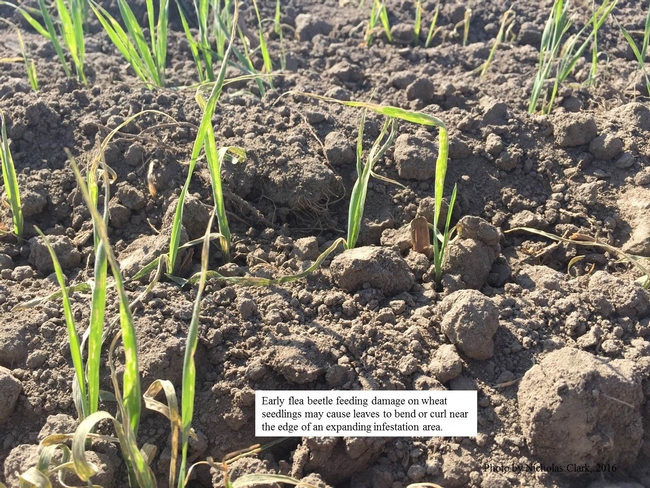
Early flea beetle feeding damage on wheat seedlings
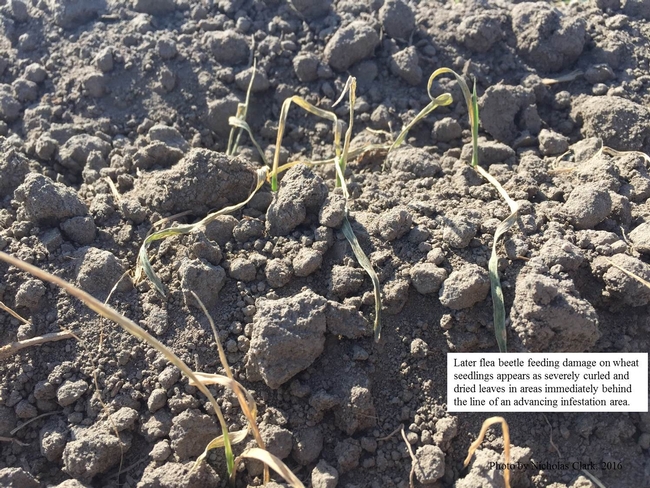
Later flea beetle feeding damage on wheat seedlings
Invasive superweed Johnsongrass is the target of a new nationwide research effort
A team of researchers has received a $5 million grant from the U.S. Department of Agriculture to find new ways to combat Johnsongrass, one of the most widespread and troublesome agricultural weeds in the world.
“Johnsongrass is a huge problem,” said Jeff Dahlberg, UC Cooperative Extension sorghum specialist and director of the UC Kearney Agricultural Research and Extension Center in Parlier, Calif. “It impacts many different crops and is very hard to control.”
Dahlberg is part of the team that includes scientists from Virginia, Kansas, North Carolina, Texas and Georgia. Andrew Paterson, director of the Plant Genome Mapping Laboratory at the University of Georgia, Athens, is the lead investigator.
The naturalization of Johnsongrass across much of the U.S. has also allowed the plant to develop attributes — such as cold and drought tolerance, resistance to pathogens and the ability to flourish in low-fertility soils — that make it particularly difficult to control. Adding to the challenge is the adoption of herbicide-resistant crops around the world.
“Herbicide-resistant crops have been associated with a dramatic increase in herbicide-resistant weeds,” Patterson said. “With 21 genetically similar but different types of Johnsongrass known to be resistant to herbicides, it will only become more problematic in the future.”
Over the course of their five-year project, the researchers will work to better understand the weed's capabilities and the genes that make Johnsongrass so resilient. Johnsongrass [Sorghum halepense] is closely related to sorghum [Sorghum bicolor (L.) Moench], a healthy gluten-free grain, animal feed and biofuel crop. Lessons learned from the Johnsongrass research may lead to strategies to improve sorghum.
For his part, Dahlberg plans to use the global information system (GIS) to map the locations of Johnsongrass in California to better record its distribution in the state and to help understand how it spread into California by relating it to other populations of johnsongrass in the U.S.
“Ideally, we will use an app to map, identify, manage, and catalog populations that have developed different traits – such as susceptibility to plant disease, ability to host a particular insect, or resistance to herbicides,” he said.
This information may lead to new management strategies that target and curb its growth, providing farmers with more options to combat the invasive plant. The researchers also hope that learning more about the fundamental structures that give Johnsongrass its unusual resilience will pave the way for new genetic tools to improve useful plants, such as sorghum.
Other researchers working on this project are Jacob Barney, Virginia Tech; C. Michael Smith, Kansas State University; Wesley Everman, North Carolina State University; Marnie Rout, University of Texas, Temple; and Clint Magill and Gary Odvody, Texas A&M University.
Alfalfa & Forage Field Day at Kearney Ag Center
Mark your calendar for Thursday September 5th and plan to join fellow growers, PCAs, and seed and chemical company reps at our annual Alfalfa and...
Alfalfa and Forage Sept 5 KAC Meeting flyer
Kearney research featured in World Ag Expo magazine
The official magazine of the World Ag Expo 2013 contains a three-page spread about sorghum research being conducted at the UC Kearney Agricultural Research and Extension Center by Jeff Dahlberg, director of the center.
Copies of the magazine will be available to visitors at the world's largest agricultural exposition Feb. 12-14 in Tulare. A pdf of the sorghum article is attached below.
In the article, Dahlberg says that, in the past, sorghum forages were not as good as corn for silage feed. But times have changed.
"We've come a long way from what your father or grandfather grew as sorghums years ago," Dahlberg said. "It's to the point now that we can compete with corn silage on both quality and tonnage."
In addition, Dahlberg said, sorghum uses from a third to half the water of corn silage, needs less nitrogen to produce the same yield, and has greater salt tolerance.
Carol Frate, UC Cooperative Extension advisor in Tulare County, told reporter Chris Bennett she is unsure of the precise role of sorghum for farmers.
"I'm looking at input costs and comparing them to yield potential and quality for milking cows," Frate said. "I would be a bit leery of the forage sorghums that grow so tall because of lodging issues. We've had some growers experimenting with them and then having 20 or 40 acres of sorghum that is pretty flat."
Sorghum is widely used in the western Panhandle of Texas, where dairies are turning to sorghum because of water issues.
"They're not losing very much by switching over and they have been pretty happy with forage sorghums," Dahlberg said.


